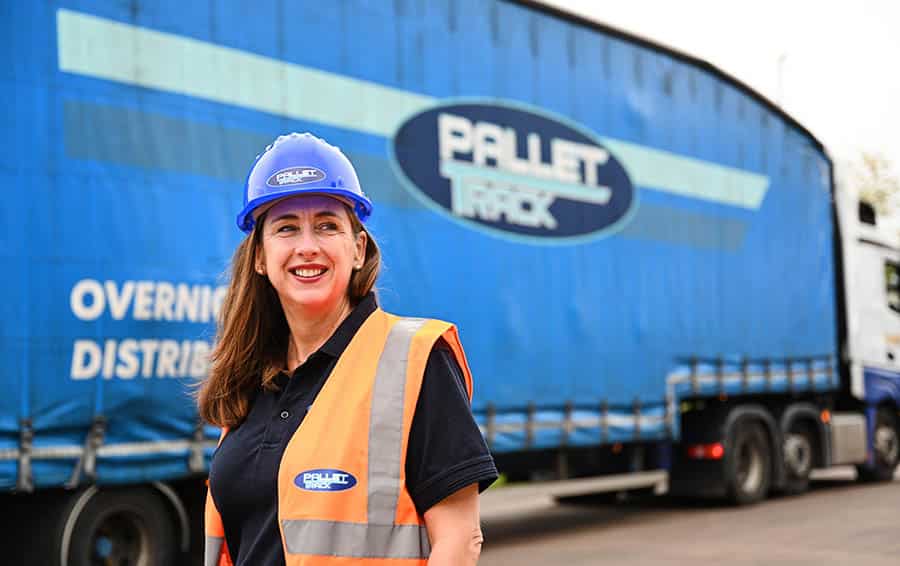New research from Pallet-Track has revealed that young women are in top gear when it comes to passing HGV tests, with female drivers aged 20-29 gaining the highest pass rates.
The pallet network’s analysis of Department for Transport (DfT) data shows that women in this age category have gained the highest Heavy Goods Vehicle (HGV) practical pass rate in Britain every year between 2010 and 2022.
While women make up only a small proportion of HGV drivers, 67.9 per cent of 20-29-year-olds successfully passed their practical test in 2021-2022, compared to 63 per cent of men in the same age category.
The overall pass rate for all drivers taking a practical HGV test in 2021-2022 was 58.7 per cent.
Pallet-Track’s analysis also shows that if the same number of women had taken tests as men in 2021-2022, based on the overall female pass rate of 62.4 per cent for drivers aged 18 to over 60, there would now be an extra 48,931 qualified HGV drivers on the road.
This would almost erase Britain’s current shortfall, which stands at 50,000 drivers according to calculations by the Road Haulage Association.
With young women accelerating ahead in HGV tests, addressing the current gender imbalance could be key to reducing Britain’s shortfall of lorry drivers and future proofing the industry.
In total, women made up just 9.1 per cent of those taking tests; 8,731 tests were completed by female drivers compared to 87,146 taken by male drivers.
Further research from the DfT’s Domestic Road Freight Statistics 2020 report found the gender split of HGV drivers in work as 99 per cent male and one per cent female – a figure that has not changed since its first inclusion in the annual report in 2016.
Caroline Green, chief executive at Pallet-Track, said: “Our research should be a real eye opener for the industry as it demonstrates the value of diversifying the logistics workforce.
“The results of the analysis show that Britain has the talent and skills to overcome any remaining driver shortages and the resources to future proof our workforce.
“However, there are some key changes the logistics industry needs to make if it wants to attract more women into driving roles, starting with driver facilities and bathroom access.
“The majority of truck stop facilities are woefully inadequate and require major improvements; we welcome the government’s recently announced match funding initiative and hope that this will be a positive step forward for the industry.
“Education is another area where major improvements are needed if we are to inspire younger generations to enter the profession, particularly young women.
“Logistics plays a major role in all our lives and is the fifth largest employer in the UK, but we need to engage with schools more to demonstrate the breadth of careers that the industry can offer.
“Being an HGV driver offers a range of perks, such as flexible hours and independent working, and great opportunities for progression, it’s time we started showing young people how rewarding a career in logistics can be.”
The analysis is based on Large Goods Vehicle (LGV) driving test pass rates published by the Department for Transport and Driver and Vehicle Standards Agency, whose data covers tests taken by male and female applicants in six age brackets, from under 20 to 60-plus.
The terms LGV and HGV are used interchangeably in this analysis, as under UK and European law, an LGV licence and HGV licence are the same licence, covering all commercial vehicles with a gross combination mass of over 3500kg.
View the full analysis of HGV driver pass rates or visit Pallet-Track to view current job vacancies.






